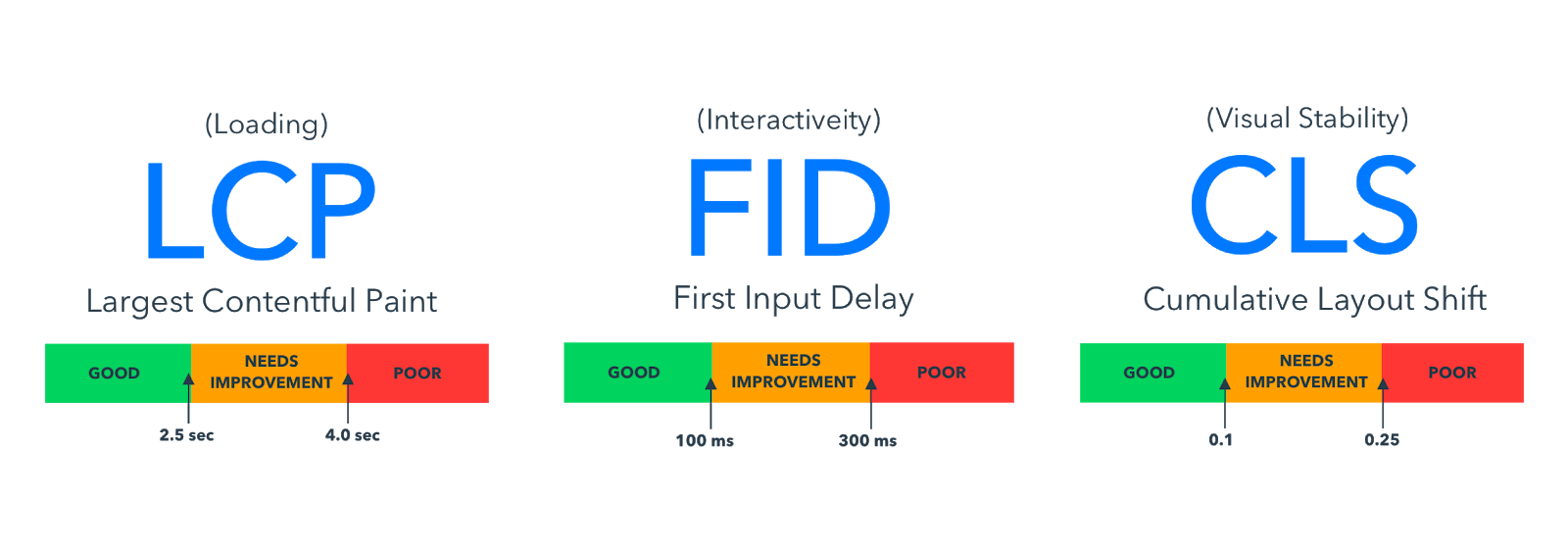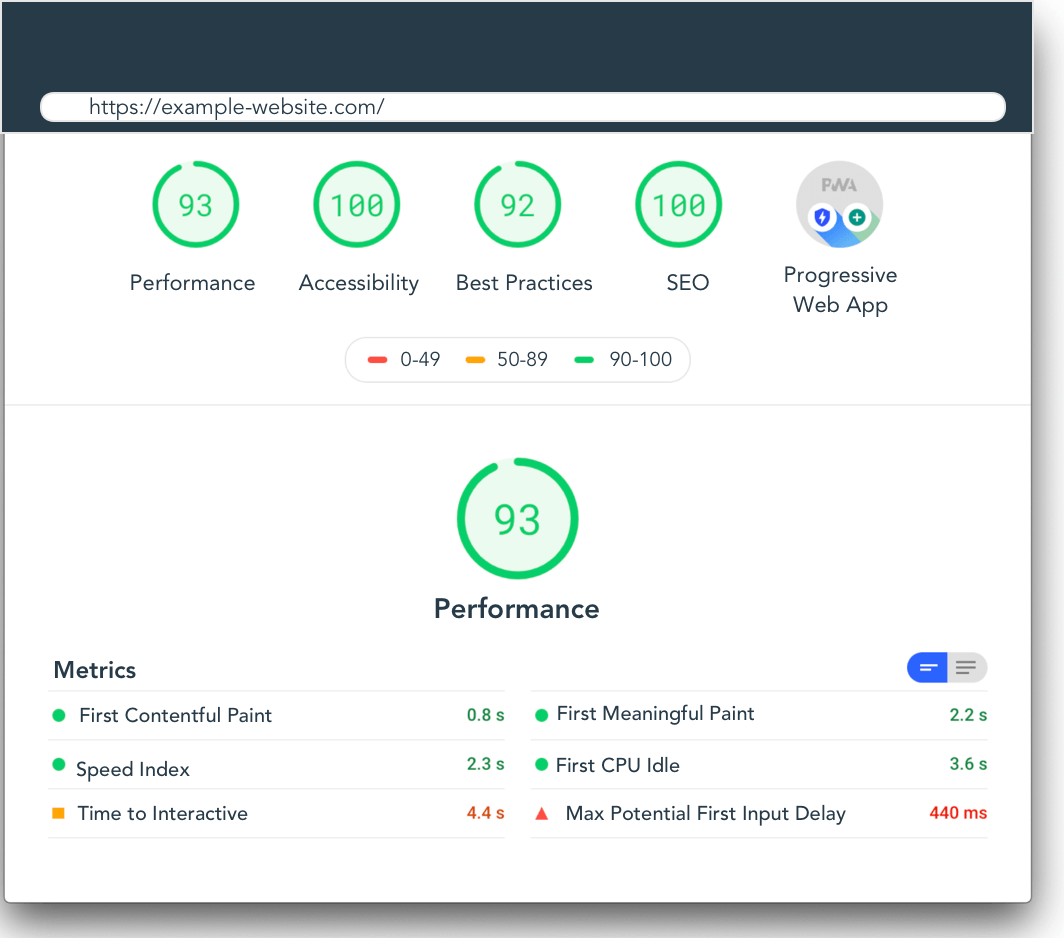
On Nov 10, 2020, Google announced that their new 2021 Google Algorithm Update will tentatively be deployed in May 2021. This update will be focused on a subset of user experience that Google calls “page experience,” and will introduce a new set of metrics called Core Web Vitals to measure how a user experiences page performance. Generally, these metrics measure different aspects of page speed (loading time).
What you will learn:
- What the 2021 Google Algorithm Update is
- How the new update will influence ecommerce SEO
- How page performance influences ecommerce today
- How to check your own Core Web Vitals
What is the 2021 Google Algorithm Update?
The 2021 Google Algorithm update, also known as the Page Experience Update, was originally announced in May 2020. Google is updating their algorithm to offer a better experience for search engine users by favoring high-performing websites with quality content in Search Results. As mentioned, the Core Web Vitals will help Google determine page performance for any given page.
The Core Web Vitals include three new metrics:
- Largest Contentful Paint (LCP)
- First Input Delay (FID)
- Cumulative Layout Shift (CLS)
To understand how these metrics currently affect user experience and loading times, let’s dive into what each of these metrics measures.

Largest Contentful Paint (LCP) is Google’s page loading metric.
LCP measures the number of milliseconds it takes for the largest content block on the page to load. When this happens, the page will appear to be fully loaded to the user.
For example, if the largest block of content is an image, then the page won’t appear to be fully loaded until the loading of that image appears complete.
First Input Delay (FID) is Google’s page interactivity metric.
FID measures the amount of time (in milliseconds) it takes for a user to be able to interact with a page by clicking any buttons that appear.
One example of FID is when you are shopping and a page appears to be fully loaded; however, when you click “Add to Cart,” the button takes more time to load.
Cumulative Layout Shift (CLS) is Google’s page stability metric.
CLS is the most complicated of the three metrics to understand. This measures the time it takes for all the elements on the page to be completely loaded so that when a user clicks on a button or certain element, the page doesn’t shift.
To understand CLS, imagine you are on an ecommerce checkout page where a “Checkout” button appears just above a “Go Back” button. If you realize you forgot to add something to your cart and click the “Go Back” button, but the page suddenly shifts so that the cursor ends up clicking the “Checkout” button, this indicates poor CLS.
How The Page Experience Update Will Influence Ecommerce Rankings
SEO is an important part of marketing for any ecommerce site. This is because organic search is one of the best ways to bring qualified traffic to your site that isn’t directly tied to your total Ad Spend.
If you already have an SEO strategy in place, it’s important to consider how the 2021 Google update will influence your rankings. Core Web Vitals are already being used to measure user experience, but with the new update, they will become an official SEO ranking factor.
This means that Google will determine which pages to send users to for specific keyword search terms based not only on how well that page answers their question, but also on how well the page performs. In other words, if there are two pages that answer a user’s search query and one of those pages has a slow page speed (a bad user experience), Google will favor the page that both answers their question and provides them with a quality user experience.
The Google algorithm is constantly getting better at answering users’ questions and giving users the best search experience. Core Web Vitals will not be the only factor in determining how well your pages will rank in search results, but it will likely be important enough to affect the amount of traffic coming to your site through organic search.
How Page Performance Dictates User Experience and Ecommerce
Every digital marketer knows the importance of quality user experience (UX), which includes fast site speeds and stable, interactive web pages. Core Web Vitals measure how different aspects of loading speeds influence user experience.
No one likes a slow loading page—in fact, a significant body of research affirms the connection between high-performing websites and conversion rates. One study conducted by Google over millions of page impressions found that when a site meets the recommendations for Core Web Vitals (when the page scores in the yellow or higher), users are at least 24% less likely to abandon a page before it finishes loading.
Also, according to Google, slow speed has a severe effect on bounce rates:
- When load time increases from 1 to 3 seconds, bounce rate increases by 32%
- When load time increases from 1 to 6 seconds, bounce rate increases by 106%
Google has given specific recommendations for the number of milliseconds they deem acceptable to provide a quality user experience, the number of milliseconds considered minimally acceptable, and the number of milliseconds that indicate your site is performing below user expectations.
By following the guidelines Google has provided, not only will your pages appear higher in Search Results, but your bounce rate will decrease, helping your website convert better.
How to Check Your Own Core Web Vitals
Use Google Search Console to Get a CWV Report
Google provides in-depth documentation on Core Web Vitals, explaining exactly what they are and which Google Webmaster tools you can use to check them for your site.
Use Google Search Console to get a Core Web Vitals Report and quickly learn whether your web pages are performing poorly, intermediate, or advanced.
Once you’ve obtained a report from Google Search Console, you can share that information with your web engineers to address the problems one by one.
Use Google Lighthouse to Test Technical Fixes
One of the most accurate ways to check your site performance in real time and check the fixes you’ve made is to use Google Lighthouse to see whether or not your overall performance score and your sub-performance scores improve as you address individual problems with your site.
Simply open Google DevTools in a Chrome Browser and click the Audits tab. Here, you’ll see an option to run a Google Lighthouse Report.
Once you run the report, you should see a screen like this:

If your adjustments are working, then these scores should be green (as pictured) or yellow. If you still have any scores in the red, you’ll want to address those immediately.
Here are some additional resources that Google has provided for you or your development team to reference as you work to increase your Core Web Vitals scores:











